SAUNDERS
Lash
Acts of Love
Opera in Three Acts
Libretto by Ed Atkins and Rebecca Saunders based on an original text by Ed Atkins
Full Score







Opera in Three Acts
Libretto by Ed Atkins and Rebecca Saunders based on an original text by Ed Atkins
Full Score






An Opera in Three Acts – Love, Mute and Loss
(2023–25)
Libretto by Ed Atkins and Rebecca Saunders, based on an original text by Ed Atkins Full Score
Dedicated to Antony Jefferis Saunders
With my grateful thanks to Ed Atkins for his inspiring words and thoughts, to Enno Poppe for his extraordinary support, to Dietmar Schwarz, and to Anna Prohaska, Sarah Maria Sun, Noa Frenkel and Katja Kolm for the wonderful sound sessions together.
Commissioned by the Deutsche Oper Berlin supported by the Ernst von Siemens Musikstiftung

First performed on 20 June 2025 at the Deutsche Oper Berlin
Original Cast
Anna Prohaska (A)
Sarah Maria Sun (S)
Noa Frenkel (N)
Katja Kolm (K)
Orchester der Deutscher Oper Berlin
Solo Instrumentalists: Christoph Grund, Ernst Surberg and Adrian Pereyra
Original Team
Musical Director: Enno Poppe
Directors: Dead Centre, Bush Moukarzel and Ben Kidd
Stage and Costume: Nina Wetzel
Lighting: Jörg Schuchardt
Video: Sébastien Dupouey
Dramaturg: Sebastian Hanusa
Duration: ca. 110 minutes
A woman is suspended in the immediate aftermath of a death. She recounts fantasies and memories of love and loss and fucking and sickness, kissing, eyeballs, genitals, fingertips, lips, and lashes – each scoured for consoling significance to hold back death’s meaninglessness.
Through the imminence of her own body, her own mortality, she rediscovers loss as the precondition of experience – of love.
Everything is both figuratively and literally extracted from the performers’ bodies. There are four performers, but only one person. A woman. Throughout the opera, the performers should conspicuously mirror one another – teasing at their broken unity until the end.
The woman seeks to retrieve something lost, to remember and to reclaim meaning. She performs a dialectic between base material (corpse; the literal) and spiritual aspiration (memory; the metaphor) that drives the entire piece.
Scenographic images should originate directly and exclusively from the performers’ bodies; through the cameras and projections, the performers’ bodies can conjure any environment. Through mime and movement, any object, character, or corpse can appear.
Lash abounds with fractured symmetries – most notably at the opera’s beginning and at the end, when the space yawns open and the performers are as one within it. Echoes converge on their source and, sung in perfect, unaccompanied unison –
Come to bed and fucking die.
Add light to some small pink star.
In which a woman is suspended in the immediate aftermath of a death. She searches for consoling significance in death’s meaninglessness. Words spill forth. ‘I wanted to ask…’ emerges as a motif, capturing abortive questions of lost intention. A woman is observed. Four performers (K, A, N, and S) appear, one by one.
In which an eyelash is retrieved and elevated to vast synecdoche. A portent of love, death sex, and language. Death is as intimate as a lover – insistent and close; love, undefined, remains a promise.
In which a woman receives loss and returns to herself. Death ripens to real. There is acceptance. Ed Atkins
The space expands and contracts throughout, and there is accord with each medium: light and sound breathe. Space is set in motion through the introduction and interrelation of these modules, rendering the space more and more pliable as it stretches.
Several modules – separate chamber pieces numbered M1 to M7 – begin one by one, both in the auditorium and on the stage. The orchestra continues throughout. The Graphic Timeline and Spatial Plan (see below and following page) illustrate the spatial and musical polyphony.
From bars 87–266 a timecode runs from 0′00 to 11′34, corresponding with the end of Scene 4 through to the end of Scene 6. A Timeline (see following page) coordinates the spatialized modules with the orchestral full score. A Spatial Plan (see below), illustrates the distribution of the modules in the Deutsche Oper Berlin production for the premier of Lash. The module numbers are independent from the scene numbers.
Monitors
All positions require a monitor with the timecode. In addition:
• Module 2 requires a live video monitor of the conductor in Scenes 3 and 4, prior to the timeline and up until 1′35 of the timeline.
• Module 2 then continues without A from 2′11, then following the timecode on the monitor.
• Module 4 requires a live video monitor of the conductor in Scene 2.
• Module 1a begins in Scene 3 prior to the timeline and may require a live video monitor of the conductor.
Spatial positions
By way of example, in the Deutsche Oper production for the premier of Lash, the spatial positions were: Boxes 1, 2 to 5, and also Boxes 3, 4, to 6, rise from medium to high, level with the Upper Circle. Box 7 is relatively low over the Stalls. The positions in the Towers are right and left on the second floor beside the orchestra pit, and are hidden from view behind a grate. See the Spatial Plan below.
Vocalists positions
A leaves Box 2 after Scene 5 to go to the stage for Lied 2. M2 then continues without A. N leaves Box 4 after M4 gesture number 12 to go to the stage for Scene 7 Postlude I & II. M4 then continues without N.
A and S leave their positions at the pianos in Lied 2 and Lied 1 for Scene 7 Postlude I & II. S and K always appear on stage.
Modules
Module 1a (M1a)
Piano 1 Downstage Right
Module 1b (M1b) Piano 2 Upstage Left
Module 2 (M2) A and Oboe Box 2 (Right)
Spatial Percussion 2 Box 1 (Right) Trumpet 1 Centre Upper Circle Trumpet 2 & 3 Box 6 (Left)
Module 3 (M3) 2 Clarinet Duos: Cl. 1 and 3 Left Tower Cl. 2 and 4 Right Tower
Module 4 (M4) N and Saxophone Box 4 (Left)
Spatial Percussion 1 Box 3 (Left)
Spatial Percussion 3 Box 5 (Right)
Module 5 (M5) Violin Duo Upstage or Box 7 (Left) or Other
Module 6 (M6) E-Guitar Orchestra Pit
Module 7* (M7) Spatial Percussion 4* *[Optional Module and Position, depending on density of Collage in performance space.]


A . . . . . . . . . . . . . . soprano
S. . . . . . . . . . . . . . . soprano
N
. alto
actor
2 BX3 Korg Organs (both doubling Simple Synth; Act 3 = 2 Grand Pianos)
Electric Guitar
2 Flutes
(doubling Piccolo and Bass Flute)
Oboe
5 Clarinets in B(3 and 4 doubling Bass Clarinet in B-, 5 doubling Contrabass Clarinet in B-)
Tenor Saxophone in B-
4 Horns in F
3 Trumpets in C
3 Tenor Trombones (3 doubling Bass Trombone)
Percussion (minimum 9 players)* (minimum 5 orchestral percussionists; 4 ‘spatial’ percussionists onstage (act 2) and in the auditorium (act 3))
Harp
Button Accordion
8 Violin 1
8 Violin 2
8 Viola
8 Violoncello
6 Double Bass (string V scordatura)
* see Legende for percussion list
















































































































































































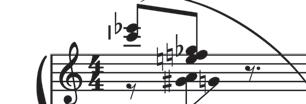



















































































































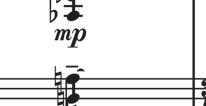















































































































































































































































































































































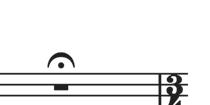























































































































































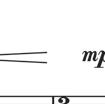








































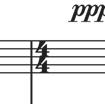
















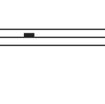














































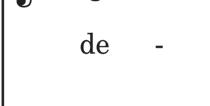


















































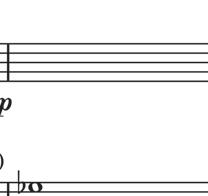
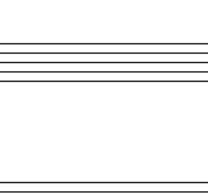






































































































































































































































































































































































































































































































































































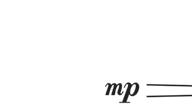
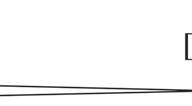

















































































































































































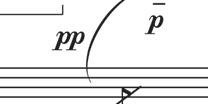









































































































































































































































































































































































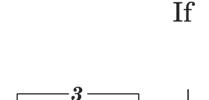
























































































































































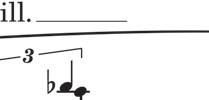
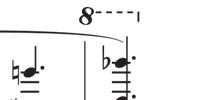





















































































































































































































































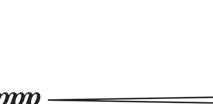

















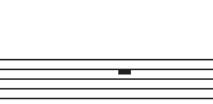























































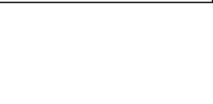

































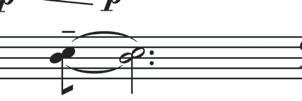







































































































































































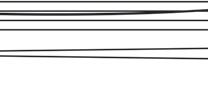








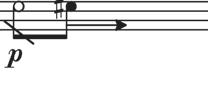





























































































































































































































































































































































































































































































































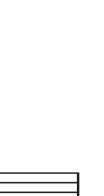



























































































































































































































































































































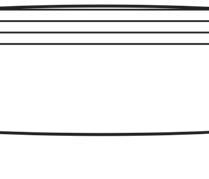




























































































































































































































































































































































































































































































































































































































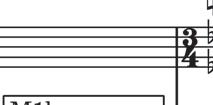
























































































































































































































































































































With her distinctive and intensely striking sonic language, Berlinbased British composer Rebecca Saunders (b.1967) is a leading international representative of her generation.
Saunders pursues an intense interest in the sculptural and spatial properties of organised sound and seeks a close collaborative dialogue with a variety of contemporary musicians and artists.
Born in London, she studied composition with Nigel Osborne and Wolfgang Rihm. Saunders has received numerous prizes, including the Ernst von Siemens Music Prize 2019, and most recently received the Golden Lion for Music from the Venice Biennale 2024. She received an Honorary Doctorate from the Universities of Huddersfield in 2018 and Edinburgh in 2023. She is a member of the Academies of Arts in Berlin, Dresden and Munich.
Mit ihrer unverkennbaren und bemerkenswerten Klangsprache ist die in Berlin lebende britische Komponistin Rebecca Saunders (geb. 1967) eine der führenden internationalen Vertreterinnen ihrer Generation. Im Fokus ihres Werks liegen die plastischen und räumlichen Eigenschaften von organisierten Klängen sowie kollaboratives Arbeiten im Dialog mit verschiedenen Musikern und Künstlern.
In London geboren, studierte sie Komposition bei Nigel Osborne und Wolfgang Rihm. Für ihre Kompositionen hat Saunders zahlreiche Preise erhalten, darunter den Ernst von Siemens Musikpreis 2019 und erhielt zuletzt den Goldenen Löwen für Musik der Biennale von Venedig 2024. Sie erhielt dem Ehrendoktorwürde von den Universitäten Huddersfi eld in 2018 und Edinburgh in 2023. Sie ist Mitglied der Akademien der Künste in Berlin, München und Dresden.